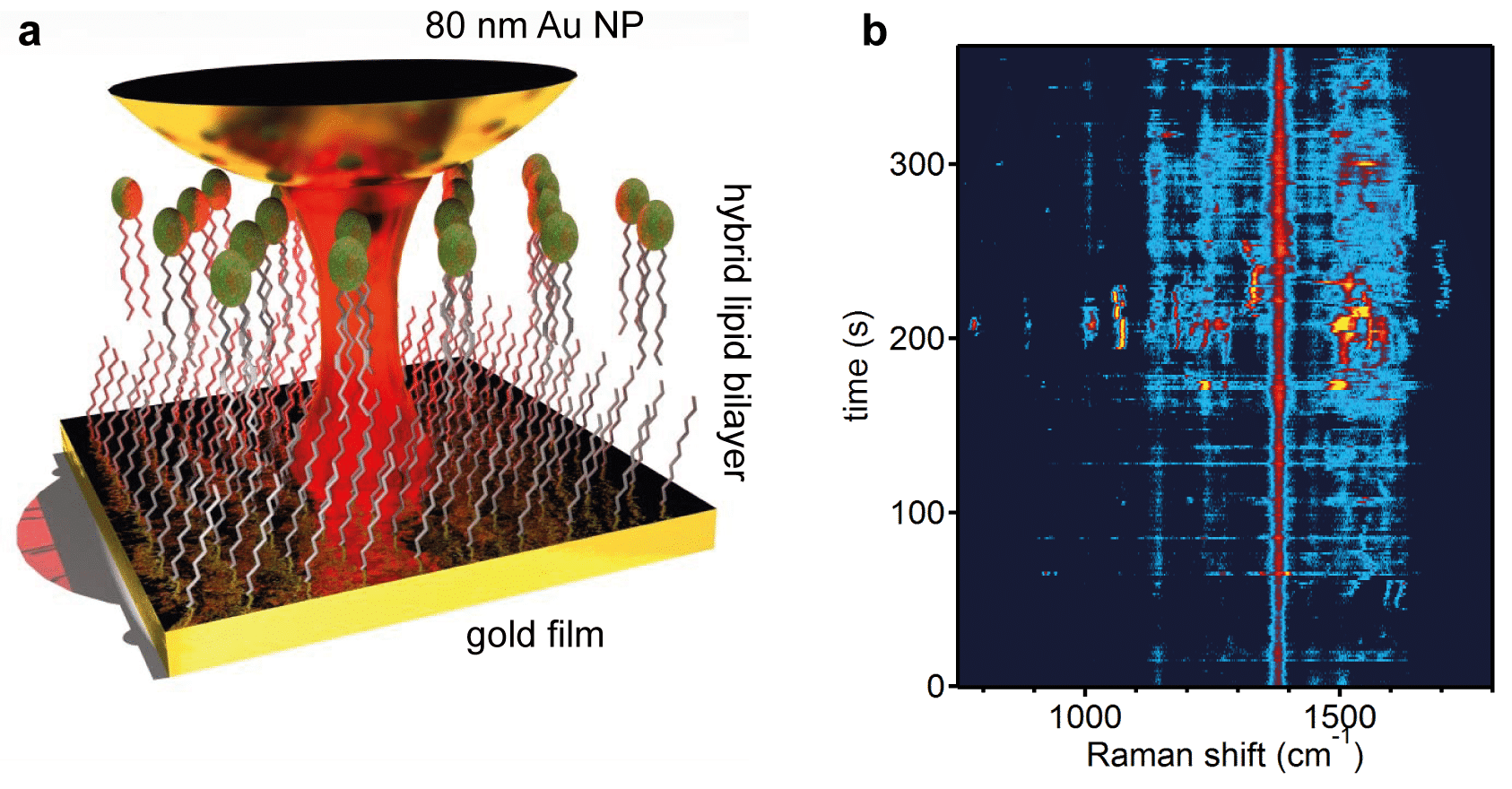
Watching Dynamics of Individual Molecules using Gap Plasmons
Investigating chemical processes involving only a few or single molecules is key to deepening our understanding of molecular processes that are at the heart of a diverse array of fields. [1-3] However, most methods rely on inhospitable molecular environments, such as ultra-high vacuum, that are not compatible with living organisms and fail to emulate comparable conditions. Raman spectroscopy is an ideal tool for investigating these processes as it is label free, non-destructive, high precision, and operates in ambient conditions.
We investigate individual gold nanoparticles sitting on a hybrid lipid bilayer on a gold film. The close proximity of the nanoparticle to the gold film allows the surface plasmons to couple to their image charges creating a tightly confined coupled plasmon mode. This mode can be used to monitor lipid diffusion below the nanoparticle by surface enhanced Raman spectroscopy (SERS). Dissolving a small amount of lipid tracer molecules in this layer allows us to follow this molecule moving in and out of the plasmonic hotspot over time. [4] Furthermore, we observe correlated and anti-correlated mode shifts allowing direct analysis of the bending and flexing of individual lipid molecules in real time.

Figure 1: a Geometry utilised: a gold nanoparticle is placed on a hybrid lipid bilayer on a gold film. b Raman time series of an individual gold nanoparticle on a hybrid lipid bilayer.
[1] D. M. Rissin, et al. Nat. Biotechnol. 28, 595 (2010).
[2] M. Edidin. Nat. Rev. Mol. Cell Biol. 4, 414 (2003).
[3] E. Bailo and V. Deckert, Angew. Chem. Int. Ed. 47, 1658 (2008).
[4] R.W. Taylor, F. Benz, et al. Sci. Rep., 4, 5940 (2014).
fb400@cam.ac.uk
Powered by Eventact EMS